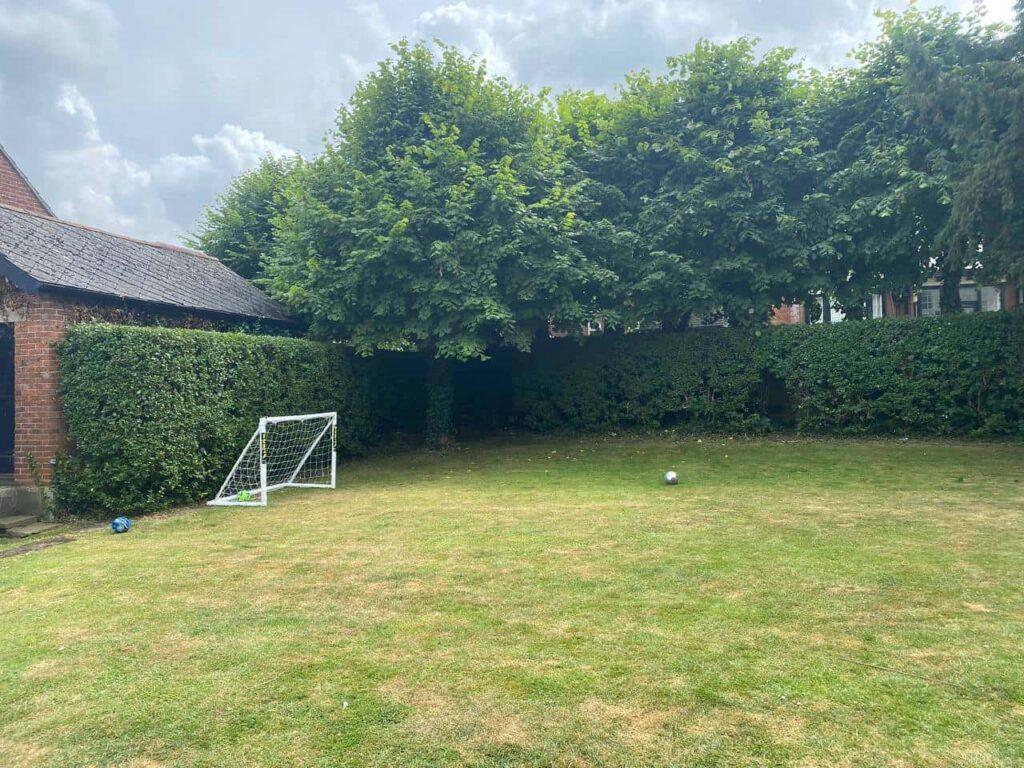Introduction: At Sudbury Tree Surgeons, we know that hedges are more than just boundaries—they’re vital components of your garden that contribute to its overall beauty, privacy, and functionality. Understanding the different types of hedges and their specific cutting needs is essential for maintaining their health and appearance. In this guide, we’ll explore the various types of hedges commonly found in British gardens and provide tips on effectively caring for each type.
1. Evergreen Hedges
Evergreen hedges retain foliage throughout the year, providing year-round privacy and a consistent green backdrop. Popular examples include:
- Leylandii: Known for its fast growth and dense foliage, Leylandii is a popular choice for tall, privacy hedges. It requires regular trimming to maintain its shape and prevent it from becoming overbearing. Best pruned in late summer or early autumn, Leylandii should be reduced to a manageable size while ensuring the interior branches receive sufficient light.
- Privet: This hardy hedge is valued for its dense growth and ease of shaping. Regular pruning is essential to maintain its neat appearance. Privet can be pruned twice yearly—once in late spring and again in late summer—to promote dense, compact growth.
- Holly: With its glossy, spiky leaves and bright red berries, Holly adds seasonal interest. It should be pruned in late winter or early spring to avoid cutting off the berries. Regular cutting will help maintain its shape and encourage new growth.
2. Deciduous Hedges
Deciduous hedges lose their leaves in winter, making them an excellent choice for adding seasonal variety to your garden. Common types include:
- Beech: Beech hedges offer a beautiful coppery hue in autumn and retain their leaves through winter. Prune Beech hedges in late winter or early spring, just before the new growth begins. This timing ensures you can effectively shape the hedge without damaging emerging buds.
- Hornbeam: Hornbeam is another deciduous option with attractive, ribbed leaves. Like Beech, it should be pruned in late winter or early spring. Hornbeam responds well to regular pruning, which helps maintain its shape and promotes dense foliage.
- Cotoneaster: This hedge provides year-round interest with its evergreen foliage and red berries. It should be pruned after flowering, typically in late summer, to avoid removing potential berries and ensure a tidy appearance.
3. Mixed Hedges
Mixed hedges combine plant species to create a more naturalistic and diverse hedge. They can include a combination of evergreen and deciduous plants, such as:
- Hawthorn and Blackthorn: These native hedgerow species are valued for their seasonal flowers and berries. They benefit from pruning in late winter or early spring. Regular cutting will help maintain their shape and encourage healthy growth.
- Laurel and Yew: Combining these two provides a lush, dense hedge with a mix of evergreen and seasonal interest. Prune Laurels in late summer and Yews in late winter to early spring to maintain their shape and encourage robust growth.
4. Flowering Hedges
Flowering hedges add colour and fragrance to your garden, enhancing its aesthetic appeal. Popular varieties include:
- Forsythia: Known for its vibrant yellow flowers in early spring, Forsythia hedges should be pruned immediately after flowering to prevent cutting off next year’s blooms. Regular cutting encourages a bushier, more compact hedge.
- Roses: Roses used as hedging provide stunning blooms and a fragrant display. Before new growth begins, they should be pruned in late winter or early spring. Removing dead or diseased wood and shaping the hedge promotes healthy, vigorous flowering.
Tips for Effective Hedge Cutting
- Use the Right Tools: Use sharp, well-maintained hedge trimmers or pruning shears for precise cutting. For larger hedges, consider using a petrol-powered hedge trimmer.
- Follow Seasonal Guidelines: Adhere to the recommended pruning times for each type of hedge to avoid damaging the plant and to encourage optimal growth.
- Maintain a Good Shape: Aim for a slightly wider base and a narrower top when cutting. This shape allows sunlight to reach the lower parts of the hedge and promotes even growth.
- Regular Maintenance: Regular pruning is crucial for maintaining the health and appearance of your hedge. Aim to trim your hedge at least once a year or more frequently if needed, depending on the type and growth rate.
Conclusion: Understanding the different types of hedges and their specific cutting needs is essential for maintaining a healthy, attractive garden.
Call us on: 01787 322 388
Click here to find out more about Sudbury Tree Surgeons
Click here to complete our contact form and see how we can help you with your tree’s needs.

